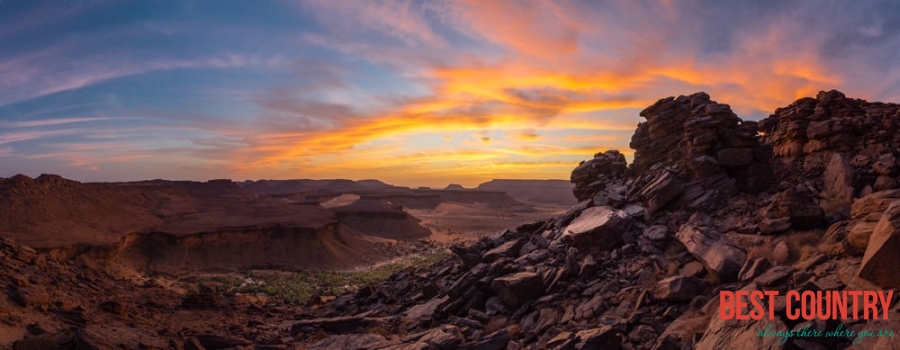The Climate of Mauritania

The northern two-thirds of Mauritania falls within the Sahara Desert, which spans much of North Africa. The country’s climate is a result of the dry northeastern trade winds, which dominate Mauritania’s weather patterns for most of the year.
Temperatures
The Tropic of Cancer passes through Mauritania, meaning the sun is always high in the sky and its rays intense. This, combined with a lack of cloud cover, means that temperatures are high, albeit slightly cooler at the coast.
Summer afternoon temperatures often reach above 100 degrees Fahrenheit across the country, rising to over 110 in the desert interior. Winters are cooler but daytime temperatures typically do not fall below 60.
Rainfall
Rainfall is extremely low for most of the year. The rainy season takes place during the summer but is restricted to the southern part of the country. In an average year, the extreme south can expect to receive around 25 inches of rain between July and October, but this total – and the duration of the rainy season – falls as you move further north. Although it’s known as the rainy season, don’t expect rain to fall constantly during these months -- in reality it arrives in stormy showers.
Vegetation Zones
Climate is a significant contributing factor to the types of vegetation you’ll see during a visit to Mauritania. The Sahara Desert in the northeast is so dry that you’re likely to see little vegetation at all beyond a few scrub grasses and small spiny plants. Agriculture is still possible in the areas around oases, where farmers grow tall date palms to shield smaller plants beneath from the strong sun.
Moving south into the Sahel, higher levels of precipitation allow the growth of acacia trees and, in some areas, date plantations. Mauritania’s main agricultural area is in the valley of the River Senegal in the far south, where irrigation from the river allows crops to grow.
Considerations
Climate is just one of the factors you should consider if you’re planning a trip to Mauritania. AQIM, a branch of Al-Qaeda, is active in the country and has explicitly threatened attacks against people from Western countries, including the United States. If you do decide to travel, the U.S. Department of State urges “extreme caution” and warns against being part of large, visible groups of Westerners. You should remain vigilant at all times. Check the State Department’s latest travel warning for the country before you go.